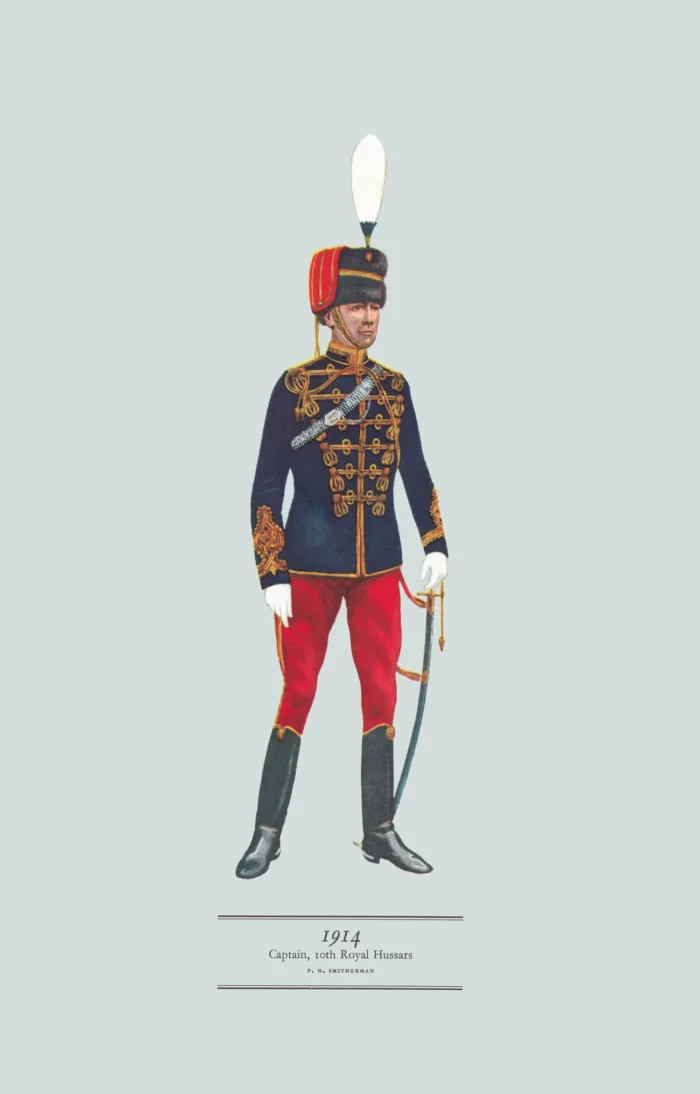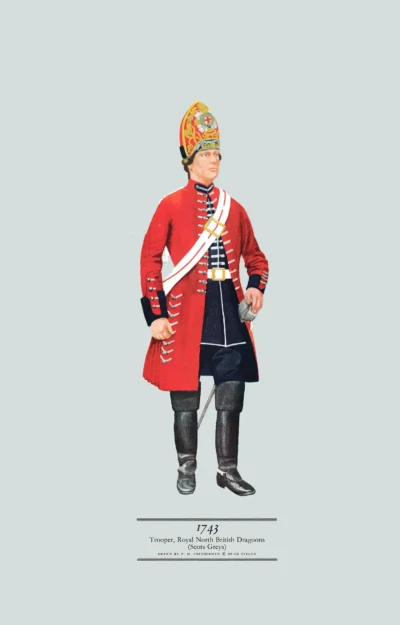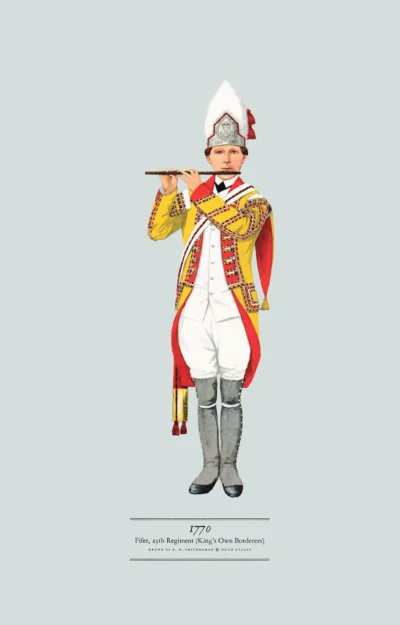Captain, 10th Royal Hussars, 1914 (King’s Royal Hussars)
£0.00
Raised 1715; from 1861 10th (The Prince of Wales’s Own) Royal Hussars; from 1992 King’s Royal Hussars – KRH scroll down for a more detailed Description)
SOLD OUT NO MORE STOCK
Published 1962 by © Hugh Evelyn Limited; drawn by Colonel Philip Henry Smitherman (1910-1982), Royal Corps of Signals
Size: c. 24 x 37cm [9 ½ ″ x 14 ½ ″] (may vary slightly from printers’ cut 50 years ago)
Printed on on medium cardstock weighing 144 g/sm2 faced in light greyish blue (RGB c. d5dede)
Print is STANDARD size – shipping is the same for 1 to 10 prints (based on largest print size in your order) – see Shipping & Returns
Out of stock
Description
The 10th Royal Hussars (Prince of Wales’s Own) was a cavalry regiment of the British Army raised in 1715. It saw service for three centuries including both World Wars but then amalgamated with the 11th Hussars (Prince Albert’s Own) to form the Royal Hussars (Prince of Wales’s Own) in October 1969. it amalgamated with the 14th/20th King’s Hussars to form the King’s Royal Hussars in 1992. Based at Tidworth it serves as the armoured regiment of the 12th Armoured Infantry Brigade. The Crimea campaign demonstrated how unsuited gorgeous outfits were to the rigours of war. All uniforms changed. For Hussars, braiding was cut to six from twenty rows, tunic replaced jacket, and the pelisse vanished. The busby remained, but smaller. This officer is in levee dress, with a curved scimitar replacing the straight sabre worn in full dress. The shoulder belt was used from the time it first adopted Hussar dress: a black leather belt covered with a special pattern of chain ornamented with silver ‘pickers’. On the cuff is an Austrian knot in gold lace surrounded by a series of ‘eyes’ indicating the wearer is a captain. A subaltern wore the knot without ‘eyes’. The single row of ‘eyes’ in the collar also indicates a captain. A subaltern would wear none, and a field officer two rows. The 10th were held in special affection by the Prince of Wales, later George IV. When he was Colonel of the regiment they had the distinction of having the most expensive uniform in the army, including full-dress horse furniture ornamented with shells, which they retained until they were mechanised in 1936.
Additional information
| Weight | 0.0123 kg |
|---|---|
| Dimensions | 23 × 37 cm |




